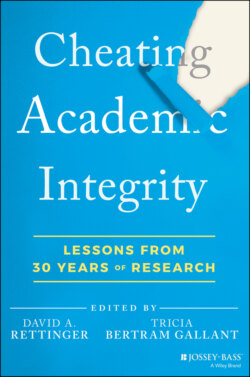Читать книгу Cheating Academic Integrity - Группа авторов - Страница 11
CHAPTER 2 Trends in Plagiarism and Cheating Prevalence: 1990–2020 and Beyond
ОглавлениеGuy J. Curtis
University of Western Australia, School of Psychological Science
It is easy to find assertions in the media that both plagiarism (Matthews, 2020) and cheating (Guessoum, 2021) are run‐away epidemics. I often encounter articles on cheating or plagiarism that begin with an assertion that academic misconduct is on the rise. Such an opening to an article is a great way to make this point: Academic misconduct is a growing problem that needs to be addressed right now! However, it is important to ask whether this point is, in fact, true.
In this chapter, I discuss the trends in the prevalence of plagiarism and cheating in the past 30 years (1990–2020). Faculty, administrators, and other higher education professionals need to know how much plagiarism and cheating is happening in order to know what they can do to combat academic misconduct. Knowing how prevalent academic misconduct is and how this prevalence may be changing can help higher education institutions get ahead of this problem and act, preemptively, to prevent it.
This chapter begins with a review of three studies that conducted repeated surveys, at different points in time, using the same measures and with similar student groups. These time‐lag studies of plagiarism and cheating suggest that the prevalence of self‐reported academic misconduct has trended downward over the period from 1990 to 2020. Next, I consider whether the downward trend in plagiarism and cheating may be accounted for by students switching to newer forms of misconduct. Specifically, I examine trends in the prevalence of self‐reported commercial contract cheating from 1990 to 2020. Despite moral panic over commercial contract cheating (Walker and Townley, 2012), there does not appear to be an upward historical trend in its prevalence in this period that would account for a reduction in other forms of plagiarism and cheating. Subsequently, I review studies of intervention‐related change in academic misconduct, which suggest that educational, technological, and policy developments may account for the downward trend in academic misconduct. Finally, I discuss current and future threats to academic integrity that may influence the future prevalence of academic misconduct.
